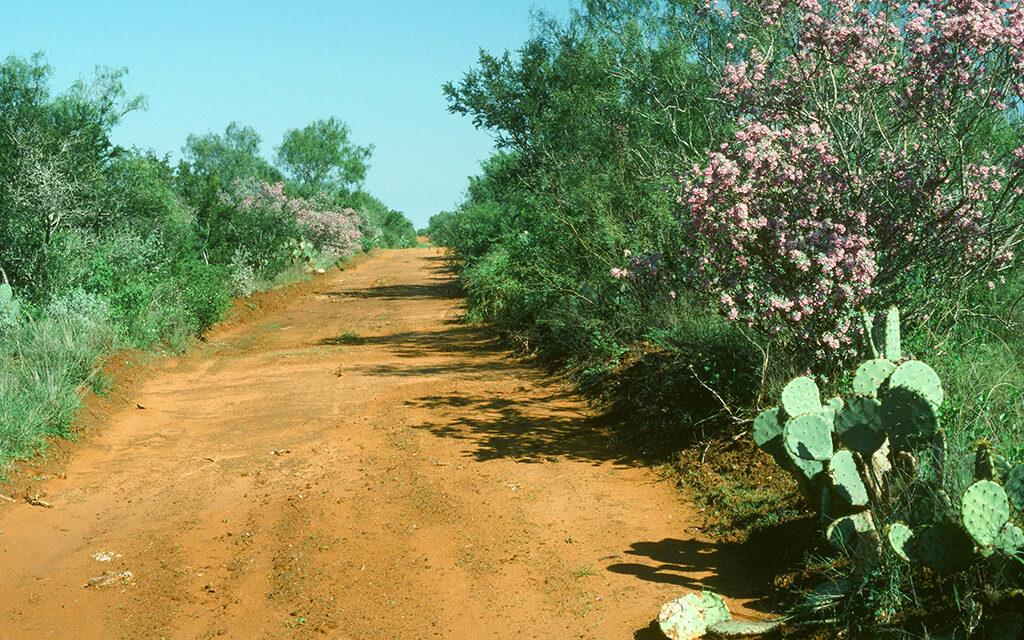By John Jefferson
To avoid a plagiarism charge, the title to this column is the name of a song written by Nat Vincent and Fred Howard and popularized by Gene Autry, Burl Ives, and others. I even sing my version to my wife.
The opening line goes: “When it’s round-up time in Texas and the bloom is on the sage.” The second verse ends with, “To be free again, just to be again where the bloom is on the sage.”
I relate to that. Sage, or “Cenizo,” as it’s properly called, is one of my favorites. I knew it was inspired to bloom by rain, but I didn’t know whether it bloomed before or after a rain. My first reference on South Texas Plants is “A Field Guide to Common South Texas Shrubs.” It said, “After a rain”.
I called Jimmy Rutledge, one of the field guide’s tri-authors, now a wildlife biologist for a large South Texas ranch. I told him I had thought it had been a rain indicator — like rain lilies.
He said he had seen it both ways. But when I ’d seen it right before a rain, was that bloom from a previous rain?
But it doesn’t make much difference. The bloom is associated with rain. And sage is beautiful.
Like the song says, it happens around roundup time. And Roundups and rain often both come in the spring and fall.
Jimmy Rut said South Texas had a four-to-five-inch rain about a month ago. And they were glad to get it. Texas is still in a severe drought.
We hope to see more sage blooming! Many of the rivers and streams have reduced flow, leaving pot holes and puddles. The Blanco River is usually one of the first to cease flowing. This year, the Guadalupe might have led the league. It’s been reported that there is no inflow coming into Canyon Lake from the Guadalupe River. Tributary creeks went dry first.
Wells are suffering all across the Hill Country. Even east of I-35! One rancher said one of his stock tanks only had a couple inches of water in it for his cows. Some ranches are already buying water. My son’s place on the river just west of Llano overlooks a series of puddles and rocks where the river used to be.
My Williamson County Commissioner recently penned an article for the Round Rock newspaper that summed up the predicament. Lake Travis, our large reservoir providing drinking water for Austin and surrounding area, is down to 632 cubic feet above mean sea level. It’s considered full at 681 cubic feet. Commissioner Cook sat in on a meeting with a weather forecaster and LCRA staff. She wrote: ”We have the worst inflows into the Lower Colorado River since 1942. Under the heat and consumption pressures, Lake Travis is losing 900 million gallons per day.”
She ended her article with this cherry thought: “Have you thought about what happens with our wastewater discharges when our streams go dry?”
JJ





